MARIANI’S
February
18, 2007
NEWSLETTER
"Istanbul Restaurant" by Fikret Muallea
WEBSITE: To
go to my web site, in which I will update food
&
travel information and help link readers to other first-rate travel
& food sites, click on: home page
ARCHIVE: Readers may now access
an
Archive of all past newsletters--each annotated--dating back to July,
2003, by simply clicking on www.johnmariani.com/archive
In
This Issue
NEW YORK CORNER: Sushi of Gari 46 by John Mariani
NOTES FROM THE WINE CELLAR: Italy Racks Up $1 Billion in U.S. Wine Sales by John Mariani
~~~~~~~~~~~~~~~~~~~~~~~~~~~~~~~~~~~
Uniquely Dal Pescatore
By John Curtas
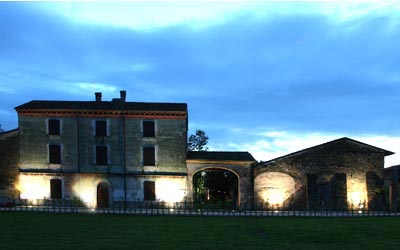 It
borders on hyperbole to say that anyone who has ever been to Dal
Pescatore knows it is a once-in-a-lifetime experience. But it
is no
overstatement that the food, service, and setting are every bit as
memorable as
the convoluted journey you will take in trying to find it. The
official
address is Riserva del Parco, Runate, Cannetto sul ‘Oglio,
It
borders on hyperbole to say that anyone who has ever been to Dal
Pescatore knows it is a once-in-a-lifetime experience. But it
is no
overstatement that the food, service, and setting are every bit as
memorable as
the convoluted journey you will take in trying to find it. The
official
address is Riserva del Parco, Runate, Cannetto sul ‘Oglio, Don’t hold this against the restaurant, however, because this Michelin three-star restaurant, like some of the world’s best, including El Bulli, Michel Bras, and Troisgros, aren’t exactly right off an exit ramp either. If you are driving there for the first time, I suggest booking for lunch, since the twists and turns and curves of the narrow back roads are less daunting in daylight. If you’ve booked for dinner, renting a private car with driver (about 200 euros from downtown Mantua) is the way to go.
But as soon as you arrive, any wrong turns or hair-pulling frustrations will be forgotten, because everything about “The Fisherman,” from the upscale, country farmhouse décor to the perfect manners of every member of the staff, is designed to put you at ease and maximize your enjoyment of the Lombardian cuisine of Nadia Santini.
Some have remarked that Dal Pescatore's cuisine and service are too French for an Italian establishment. To the extent that you are given intensive care service in plush surroundings, from the moment you arrive, that observation is true. But the cuisine is resolutely Italian and firmly steeped in the traditions and superior ingredients of the region and draws for its ingredients on the restaurant's own farm and river, including chickens, duck, and freshwater fish.
Dal Pescatore dates to 1925 when the paterfamilias of the Santini family bought a fisherman's hut made from rushes and bricks on the shore of a small lake. A year later he wed Teresa, and she began cooking up the fish her husband caught for their little tavern called Vino e Pesce. Their son Giovanni and his wife Bruna expanded the tavern in the 1950s and renamed it Dal Pescatore. Their son, Antonio, married Nadia (below) in 1974, and they both toured the great restaurants of France and brought back a respect for elegance and refinement they incorporated into their own restaurant. Antonio is the greeter and master of the dining room while Nadia (with a little help from her sons and in-laws) runs the small, impeccable kitchen.
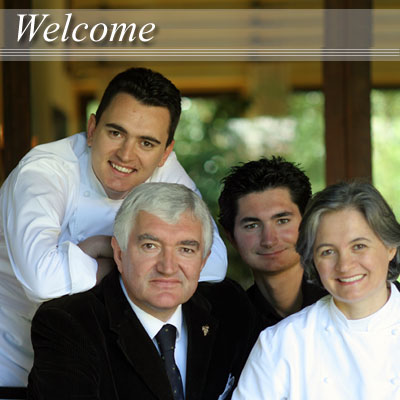
After nibbles on rosemary “chips” and parmesan frico with glasses of Prosecco, our meal began with a silver platter of exquisite culatello prosciutto served to each guest so each can pick up a tissue-thin, tissue-sized slice with their fingers, to be popped in the mouth, allowing your personal 98.6 degrees of body heat to release the flavors and melt the meat on your tongue. Such a service gesture is a symbolic and real evocation of the finest in Italian dining, designed to highlight a superior product and put diners at ease. It does both.
From there our meal moved smoothly from multiple antipasti as diverse as veal liver with porcini mushrooms and marinated eel atop agrodolce onions. Then came several primi piatti of pasta, including Nadia's famous tortelli di zucca (egg pasta with pumpkin, crushed amaretti biscuits, and Parmigiano), then on to a progression up the food chain of secondi piatti, starting with a sea bream with calamari and olives, then fresh water pike with sweet and sour greens, followed by roasted fowl--sliced duck with mostarda, again highlighting the fruit/spice/agrodolce flavors unique to this part of Italy, and finally to the Santinis’ famously decadent braised beef shoulder in a Barbera-rich reduction. There wasn’t a misstep or false note, by the kitchen or service staff, through eleven courses and four hours of dining, and I’m convinced that Antonio Santini believes it his mission to make all first time diners feel like family by the end of their meal.
A very young, very knowledgeable wine staff contributes to the friendly formality that pervades the room, offering a list of thousands of labels all stored perfectly. Even with a full house on his hands, Sommelier Andrea Ugolotti acted as our personal wine guide for the evening. He also gave me a friendly comeuppance after I (unintentionally) insulted his list. Upon being told the next pasta course (there were three of them plus an ethereal saffron risotto) would be tortelli with sheep’s milk ricotta, Ugolotti recommended a Vodopivec '02 Trebbiano by pointing to it on his list. I told him I preferred the ’03 Gravner Breg that was, at 72 euros, roughly twice the price of his selection. Politely taking the book from me, he took two steps, then turned and with a twinkle in his eye said: “You’re only ordering the Gravner because it is more expensive than my suggestion, aren’t you?” I was beet red for a moment and guilty as charged. He was right about my shamefully snobbish motivations, and the exchange gave all of us a life lesson, a wine lesson, and a good laugh. He was also right about the Trebbiano. Its floral and ripe peach aromas played off the cheese of the tortelli perfectly. My choice of Gravner would have been too young and too acidic. Before bringing them both, Ugolotti told me that if we didn’t like his pick, or even just preferred my selection, the Vodopivec would be on the house. It was anyway, and Andrea Ugolotti now has four new fans for life.
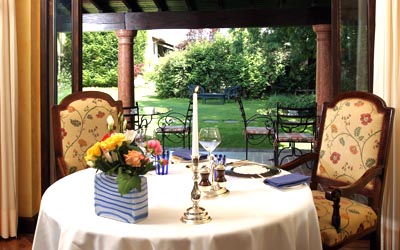 It is historical legend that the Italians
taught the French how to eat (with
knives and forks, for example), but the French taught them (a few
centuries
later) how to dine. Dal Pescatore may be the perfect synthesis of
all
that is great about both these cuisines and the way they are
served. The
best way to sum up the experience is by recounting what I heard about
it
shortly before leaving for
It is historical legend that the Italians
taught the French how to eat (with
knives and forks, for example), but the French taught them (a few
centuries
later) how to dine. Dal Pescatore may be the perfect synthesis of
all
that is great about both these cuisines and the way they are
served. The
best way to sum up the experience is by recounting what I heard about
it
shortly before leaving for Tel.: 011-39 0376 72 30 01; www.dalpescatore.com
NEW
YORK CORNER
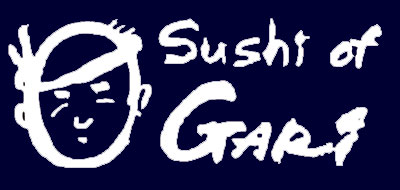
347
212-957-0046
For a decade now Gari (Masatoshi) Sugio has run an East Side sushi restaurant that was innovative for the way he served sushi with both cold and warm ingredients, with more than 130 varieties. Last October he opened this Theater District branch with p
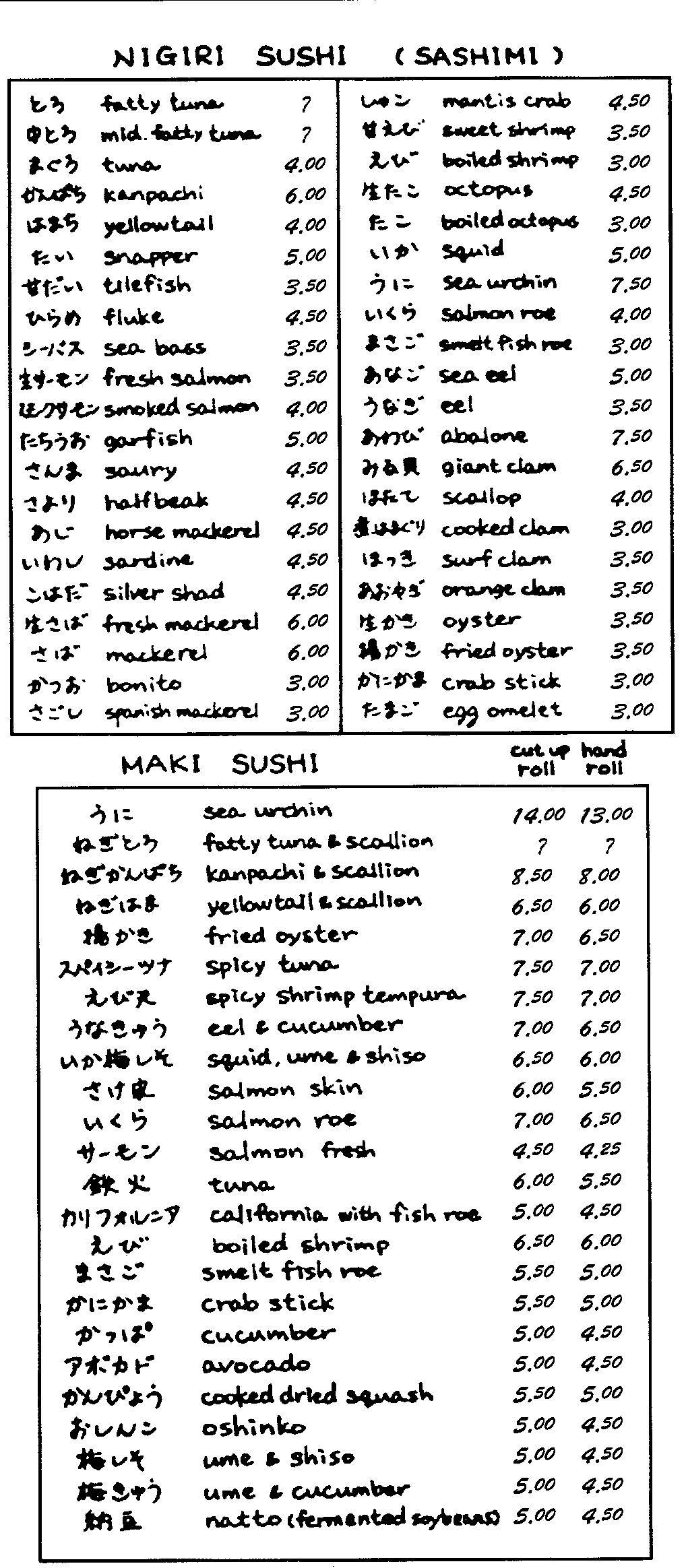
The new place, which takes the numeral of the street it resides on--one teeming with restaurants that specialize in pre-theater action--has exposed brick walls, banquettes and a white marble sushi bar; beyond that there isn't much decor to speak of, as in so many sushi restaurants where the color is on the plate. And those colors are extensive on a menu (right) that includes soups and noodles, dozens of sushi and sashimi items, ten appetizers, tempura and teriyaki dishes, and the option of Gari's "Signature Omekase," which show off his infatuation with raw and slightly cooked foods--which he marinates and spices, so that he does not provide soy sauce or wasabi on the table because he believes a dose would upset the delicate balance of flavors. On my visit I didn't miss either condiment.
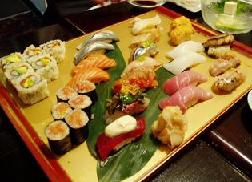 Our table of four pretty much left ourselves in the
chef's hands, though we insisted on trying a couple of noodle dishes,
neither of which amounted to much. Otherwise there was a lot to be
happy about, and from the start, the mix of warm, cold and room
temperatures worked well, if in unorthodox ways. Appetizers like hiyahi nasu (cold marinated
eggplant with bonito flakes) and kani
shumai (steamed crab dumpling) were delicious, and then came
what we thought would be way too much sushi and sashimi, but we
never seemed to fill up. Since so much of what we ate was in fact
"of the moment," it is difficult for me to recommend any particular
dishes, because they will change tomorrow. But you'll
find delicacies like salmon topped with
grilled tomato, and tuna lavished with a cream of tofu; even foie gras
is here, done with a ponzu and daikon sauce, and the simplest of sushi
and sashimi are lustrous, silky, and served right at the proper
temperature to exude full flavor, from horse mackerel to surf clam,
from fluke to tilefish, from garfish to sweet shrimp. I was not
much taken with the tempura, which was crisp enough but bland.
Our table of four pretty much left ourselves in the
chef's hands, though we insisted on trying a couple of noodle dishes,
neither of which amounted to much. Otherwise there was a lot to be
happy about, and from the start, the mix of warm, cold and room
temperatures worked well, if in unorthodox ways. Appetizers like hiyahi nasu (cold marinated
eggplant with bonito flakes) and kani
shumai (steamed crab dumpling) were delicious, and then came
what we thought would be way too much sushi and sashimi, but we
never seemed to fill up. Since so much of what we ate was in fact
"of the moment," it is difficult for me to recommend any particular
dishes, because they will change tomorrow. But you'll
find delicacies like salmon topped with
grilled tomato, and tuna lavished with a cream of tofu; even foie gras
is here, done with a ponzu and daikon sauce, and the simplest of sushi
and sashimi are lustrous, silky, and served right at the proper
temperature to exude full flavor, from horse mackerel to surf clam,
from fluke to tilefish, from garfish to sweet shrimp. I was not
much taken with the tempura, which was crisp enough but bland.Unfortunately a lot of what we enjoyed was barely recognizable to us because our waiter spoke English--or tried to speak English--with as much aplomb as Manuel the waiter did on "Fawlty Towers." This is really a demerit, not because poor language skills are unknown in Japanese restaurants here but because, alas, they shouldn't be.
By the way, Sushi of Gari 46 offers both take-out and delivery within a 10-box radius, with omekase orders packed in a shiny
There are the usual Japanese beers available, along with several sakes created by Gari himself.
Sushi of Gari is open Tues. – Sun. for lunch and dinner. At dinner appetizers range from $4.50-$9.50, entrees and sushi $18-$48. Omekase dinner from $65.
NOTES FROM THE WINE CELLAR
by John Mariani
The announcement was made at a news conference in
Many people in the wine industry credit Caputo for
As Trade Commissioner he opened a very stylish
His efforts were buoyed by new nutritional evidence that Mediterranean food was beneficial to Americans’ health, with Italian red wine in the bargain.
Sicilian by birth, Caputo (below) received a doctorate in Law followed by a degree in Journalism and a doctorate in Political Science from the
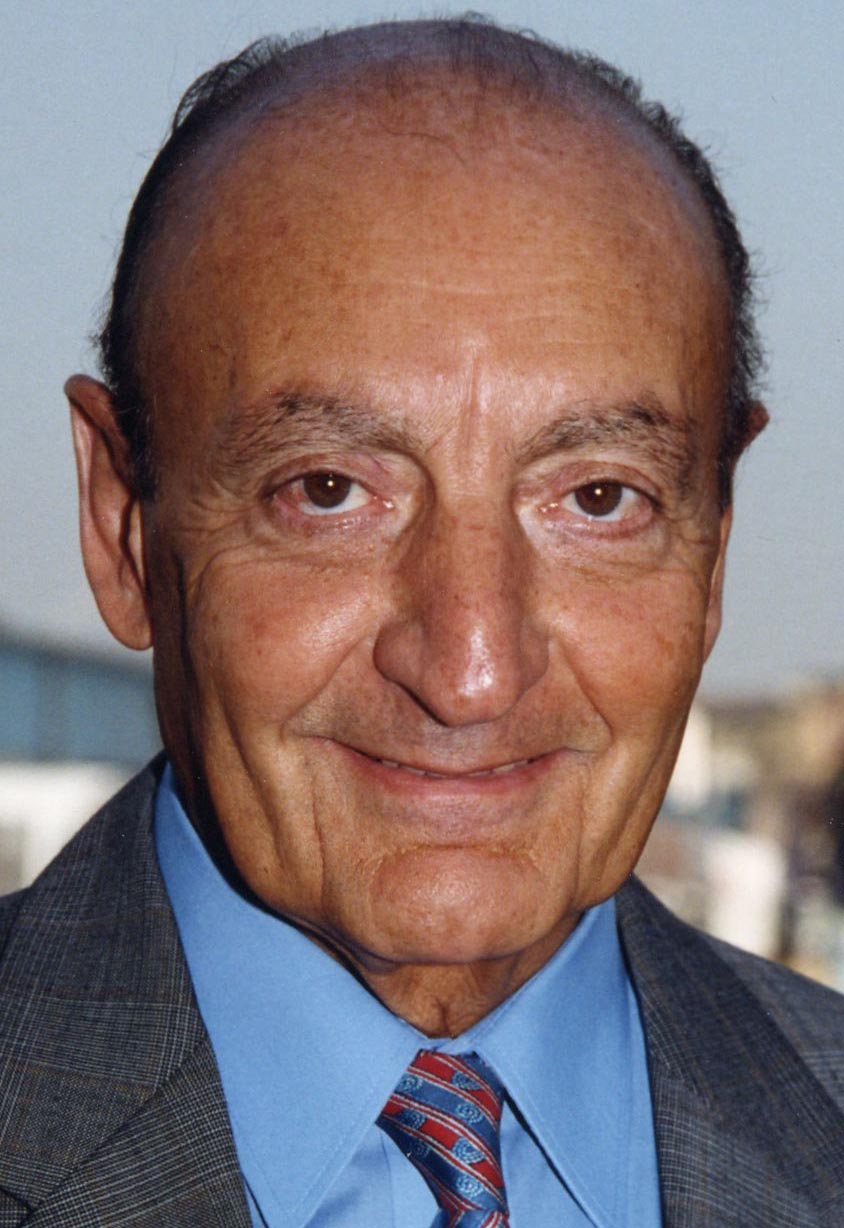
In 1984, Caputo founded the Italian Wine & Food Institute, a non-profit corporation established to promote and improve the image of Italian products in the U.S In 1987 he became president of a public relations company, the
Last week Caputo held his annual Italian Food & Wine Gala bringing many of the most illustrious Italian vintners to the New York Marriott Marquis to pour hundreds of new releases for
The report shows that
All this comes at a time when the Italians are drinking less wine than ever. “All per capita drinking has gone down in
Fortunately wine consumption is up in the
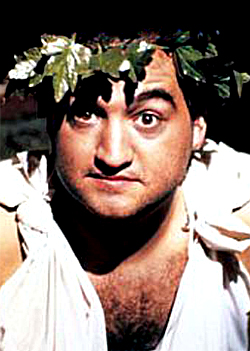 Caputo
is therefore adamant in telling
Italian producers
to hold the line
on prices, because “if they do not, they will lose their advantage.” He also notes that Australian bulk wines have
cut heavily into the French and
Caputo
is therefore adamant in telling
Italian producers
to hold the line
on prices, because “if they do not, they will lose their advantage.” He also notes that Australian bulk wines have
cut heavily into the French and Then, using a favorite Italian metaphor, “Wines today are like cars: You can get a good car today for $12,000. If you buy a Ferrari or Maserati you get more power and gadgets but you’re also paying a lot just for the name. Right now Italian wines are perfectly priced to keep claiming more and more of the world market.
John Mariani's weekly wine column appears in Bloomberg Muse News, from which this story was adapted. Bloomberg News covers Culture from art, books, and theater to wine, travel, and food on a daily basis, and some of its articles play of the Saturday Bloomberg Radio and TV.
WE THINK THAT MEANS THE SAME THING IN YIDDISH
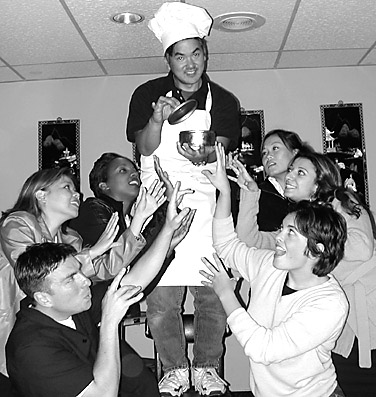
"When I heard there was a bar that matched cocktails and small plates to customers' chakras — Hinduism's seven energy centers of the human body — I had to check it out. My vishuddha was feeling a little sore, so perhaps a Chakratini, as the new Chakra restaurant in Beverly Hills calls its chakra-friendly cocktails, would set it right.-- Leslie Brenner, "A blissful happy hour ," LA Times (Nov 2, 2006)
WRETCHED EXCESS NO. 3,455
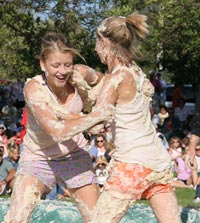
In Bethalto, Illinois, Rhonda Cato, 48, was charged with misdemeanor obscenity and violating the liquor code after patrons at The Palace Tavern grappled in a shallow, inflatable pool filled with mashed potatoes.
The chef whose work at NYC's Russian Tea Room I praised highly two weeks ago, Gary Robins, has been let go at the restaurant, making my remarks on the food wholly irrelevant.
QUICK BYTES
* On March 1, a Craggy Range Wine Dinner with T.J. Peabody will be held at the Hotel Bel-Air in
*On March 7
MARIANI'S VIRTUAL GOURMET NEWSLETTER is published weekly. Editor/Publisher:
John Mariani. Contributing Writers: Robert Mariani, Naomi
Kooker, Kirsten Skogerson, Edward Brivio, Mort
Hochstein, Suzanne Wright. Contributing
Photographers: Galina Stepanoff-Dargery, Bobby Pirillo. Technical
Advisor: Gerry McLoughlin.
Any of John Mariani's books below
may be ordered from amazon.com by clicking on the cover image.
SUBSCRIBE AND UN-SUBSCRIBE:
You may subscribe anyone you wish
to this newsletter--free of charge--by
clicking here.
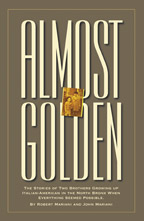 My
newest book, written with my brother Robert Mariani, is a memoir of our
years growing up in the My
newest book, written with my brother Robert Mariani, is a memoir of our
years growing up in the For those of you who don't think of the Robert and I think you'll enjoy this very personal look at our --John Mariani |
 |
 |
 |
 |
 |
 |
copyright John Mariani 2007
